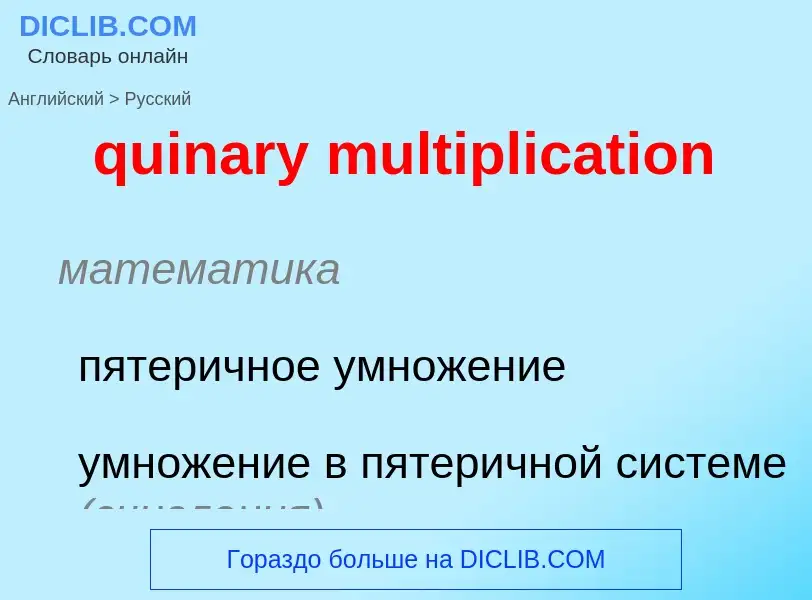Tradução e análise de palavras por inteligência artificial ChatGPT
Nesta página você pode obter uma análise detalhada de uma palavra ou frase, produzida usando a melhor tecnologia de inteligência artificial até o momento:
- como a palavra é usada
- frequência de uso
- é usado com mais frequência na fala oral ou escrita
- opções de tradução de palavras
- exemplos de uso (várias frases com tradução)
- etimologia
quinary multiplication - tradução para russo
математика
пятеричное умножение
умножение в пятеричной системе (счисления)
['taimzsain]
общая лексика
косой крест
знак умножения (×)
Definição
Wikipédia
In mathematics, ancient Egyptian multiplication (also known as Egyptian multiplication, Ethiopian multiplication, Russian multiplication, or peasant multiplication), one of two multiplication methods used by scribes, is a systematic method for multiplying two numbers that does not require the multiplication table, only the ability to multiply and divide by 2, and to add. It decomposes one of the multiplicands (preferably the smaller) into a set of numbers of powers of two and then creates a table of doublings of the second multiplicand by every value of the set which is summed up to give result of multiplication.
This method may be called mediation and duplation, where mediation means halving one number and duplation means doubling the other number. It is still used in some areas.
The second Egyptian multiplication and division technique was known from the hieratic Moscow and Rhind Mathematical Papyri written in the seventeenth century B.C. by the scribe Ahmes.
Although in ancient Egypt the concept of base 2 did not exist, the algorithm is essentially the same algorithm as long multiplication after the multiplier and multiplicand are converted to binary. The method as interpreted by conversion to binary is therefore still in wide use today as implemented by binary multiplier circuits in modern computer processors.


